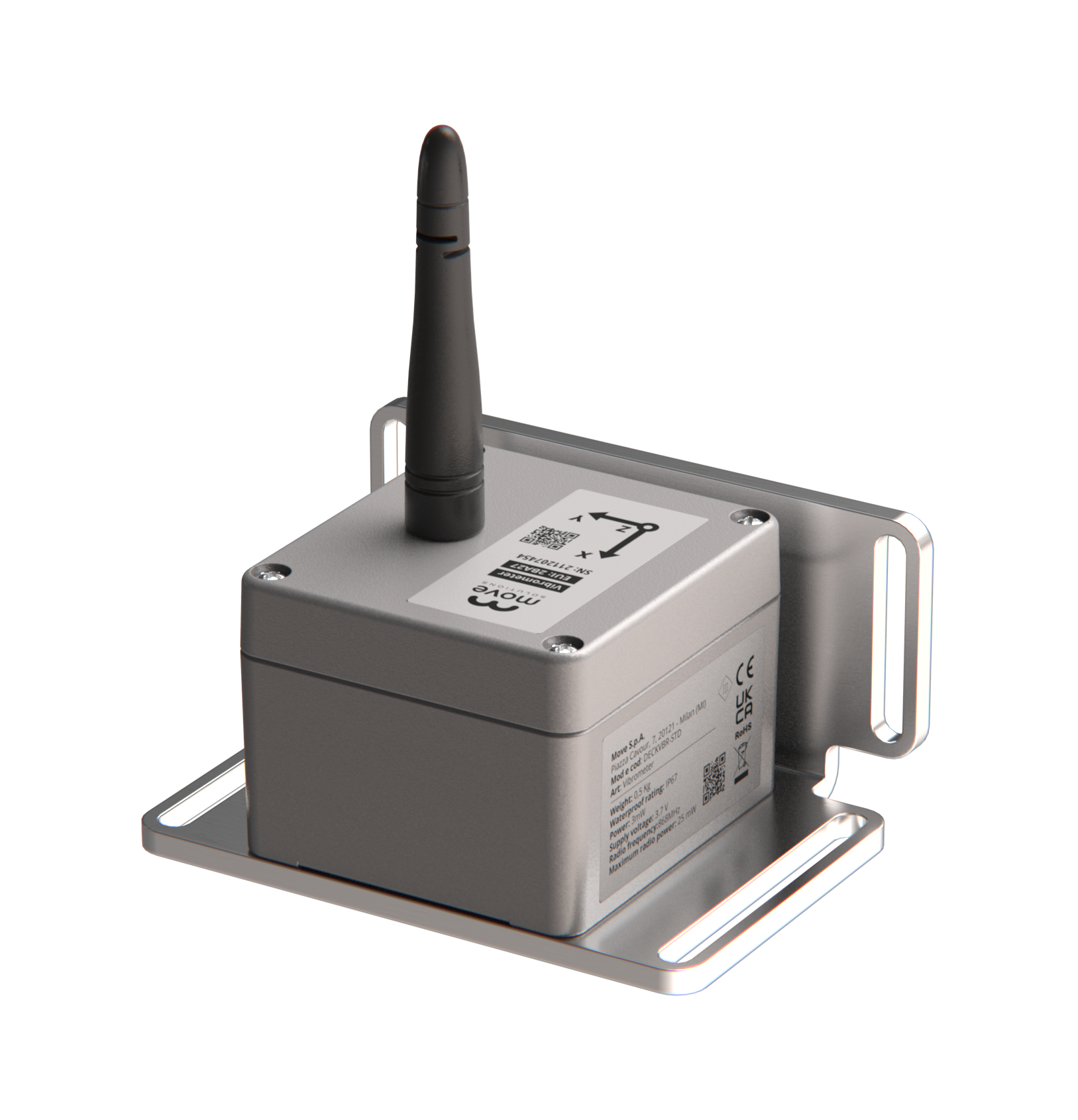
Location
Sunny Isles Beach, Miam, Florida (USA)
Solutions
Buildings and heritage sites
Real-Time Monitoring for Coastal High-Rise Safety in Miami
project start
Sensors



Real-Time Monitoring for Coastal High-Rise Safety in Miami
Overview
In 2024, a study by the University of Miami raised concerns across Florida’s coastal communities. It revealed that 35 buildings along the Miami Beach to Sunny Isles Beach coastline — including the Marenas Beach Resort — are experiencing subsidence. For the residents and management of this 28-story condo-hotel, the news was unsettling, especially with the nearby construction of the 60+ story St. Regis towers just beginning.
Under the guidance of their structural engineers, Marenas had already installed a real-time structural health monitoring system due to the adjacent construction activity. As highlighted in the Miami Herald interview and segment, this proactive step provided a tangible example of “peace of mind”: the presence of the monitoring system provided reassurance and peace of mind to owners and investors, avoiding a rush-sale scenario that could have negatively impacted property values.
For further details, see:
Rather than waiting for visible damage or relying on assumptions, the Marenas condominium board chose a proactive approach. In collaboration with SmartCore Systems, a Miami-based structural monitoring company, and with structural engineering support from Pistorino and Alam Engineering, a renowned engineering firm specializing in structural and forensic engineering services, they installed a real-time wireless sensor network powered by Move Solutions technology.
Project Objectives
The monitoring initiative had the following goals:
- Monitor vibrations and structural behavior during adjacent construction.
- Detect potential differential settlement under dynamic loads.
- Provide real-time updates to engineers and building management.
- Collect technical data for legal, insurance, and long-term structural monitoring purposes, building a strong dataset to support the 25–30 year milestone inspections.
Installing the monitoring system was a strategic decision — a concrete step toward resilience in an area exposed to geotechnical and climate-related risks.

The Monitoring System
Installed in August 2024, the system features an array of Move Solutions wireless battery powered sensors, managed and maintained by SmartCore Systems. The setup enables:
- High-precision measurements of vibrations and tilt.
- Continuous real-time data flow.
- Remote real-time diagnostics via the MyMove platform.
The installed sensors and devices include:
- Tiltmeters
- Vibrometers
- Gateway – a single LoRaWAN gateway was sufficient to ensure full coverage of the entire sensor network across the building, highlighting the system’s long-range communication capability and robust signal penetration, even through dense structural elements.
The system was deployed in parallel with the start of deep foundation work on the St. Regis, allowing engineers to correlate vibration data with construction activity.
Results and Reliability
Since activation, the system has provided 24/7 monitoring of Marenas’ structural behavior. Residents now benefit from live data that confirms the building’s stability.
A notable incident occurred over the Christmas holiday: during routine maintenance and sensor battery replacement, a technician forgot to disable the alert system, triggering a Critical vibration alarm. Although the cause was harmless, the system operated flawlessly — detecting the anomaly and instantly alerting the team.
This episode demonstrated the platform’s effectiveness in both emergency detection and historical analysis, as well as its readiness for legal preparedness.
A Model for Urban Resilience
The Marenas project underscores the strategic value of implementing wireless structural health monitoring systems in high-rise buildings located in geotechnically sensitive environments. In areas like Miami — characterized by porous soils, tidal fluctuations, and continuous vertical urban development — the availability of high-resolution, real-time structural data is no longer a luxury, but rather necessity.
Beyond supporting daily operational safety and resilience, continuous monitoring provides a critical foundation for complying with regulatory requirements such as Florida’s milestone inspection program. Under current legislation, structural inspections are mandated at the 25- or 30-year mark, depending on the building’s distance from the coastline, and at regular intervals thereafter.
A continuously updated dataset — encompassing tilt, vibration, and settlement parameters — offers engineers objective, time-stamped evidence of a building’s structural behavior over an extended period. This not only enhances the accuracy and efficiency of the milestone assessment but can also streamline decision-making processes, support defensible maintenance strategies, and contribute to preserving asset value.
This collaboration between SmartCore Systems and Move Solutions represents a replicable model for:
- Proactive mitigation of structural risks through continuous monitoring.
- Strengthening resident confidence by providing verifiable data and fostering peace of mind.
- Enabling data-driven infrastructure management strategies based on real-time performance insights.
- Supporting insurance and legal processes with objective, time-stamped records, while also contributing to insurance optimization by offering a transparent and quantifiable assessment of structural integrity.
As SmartCore CEO Mario Verciani notes:
“While we recognize the remarkable work of architects and engineers in designing high-rise structures, geotechnical uncertainties—especially in complex coastal environments—can challenge even the best planning. Continuous real-time monitoring offers data-driven reassurance that a structure is performing as expected.”
— Mario Verciani, CEO, SmartCore Systems
Other case studies
Transforming bridge safety with real-time structural health monitoring in West Virginia
West Virginia is home to numerous bridges in need of closer oversight, with nearly 1 in 5 identified as requiring targeted structural improvements.
Huntington, USA
Wireless Monitoring of the Zambeccari Bridge in Tuscany
The Zambeccari bridge in Pontremoli was built in the early 1900s on the Verde stream. It is a reinforced concrete bridge developed on two spans of the same length. In May 2020, the closure to both vehicular and pedestrian traffic is ordered for structural checks. The objective of the temporary closure of the structure is to clarify the state of health of the bridge and its structural degradation. After verifying the state of the Zambeccari bridge by the Vega Engineering Company, the structure was reopened with a reduced carriageway. Vega has prepared, with the approval of the municipality, the insertion of a continuous and remote structural monitoring system.
Pontremoli, Tuscany, Italy
Dynamic Monitoring of the Vespucci Bridge in Florence
The Vespucci bridge is one of the central bridges of Florence that allows you to join the San Frediano district to the rest of the city, separated by the Arno river. It is a structure in c.a.p. arch divided into 3 spans, with an overall length of 162m. Designed by Riccardo Morandi and built between 1954-1957, suffers from deterioration of the concrete, like many works of the time. This deterioration has affected the two piers even more markedly, especially the one on the left (San Frediano side) due to the erosion of the riverbed by the currents of the Arno river. This structural deterioration required continuous monitoring and safety works.
Florence, Italy
Tilt and Vibration Monitoring of a Railway Bridge
The bridge located on the Scrivia river, one of the arteries of the homonymous valley, is a structure all about 160 meters long and is divided into 7 spans with lowered arches, in reinforced concrete. Built-in the early 1900s, it served as a road and rail bridge for years. In 1980 the extension of the bridge over the Scrivia (structure in reinforced concrete with slab and beams) was carried out and also a shift of the railway network to its own site, thus splitting the two uses. To monitor the health of the bridge, a wireless sensor network was installed consisting of DECK to monitor displacement and Triaxial Tiltmeter to monitor the inclination of the […]
Casella, Genoa, Italy








